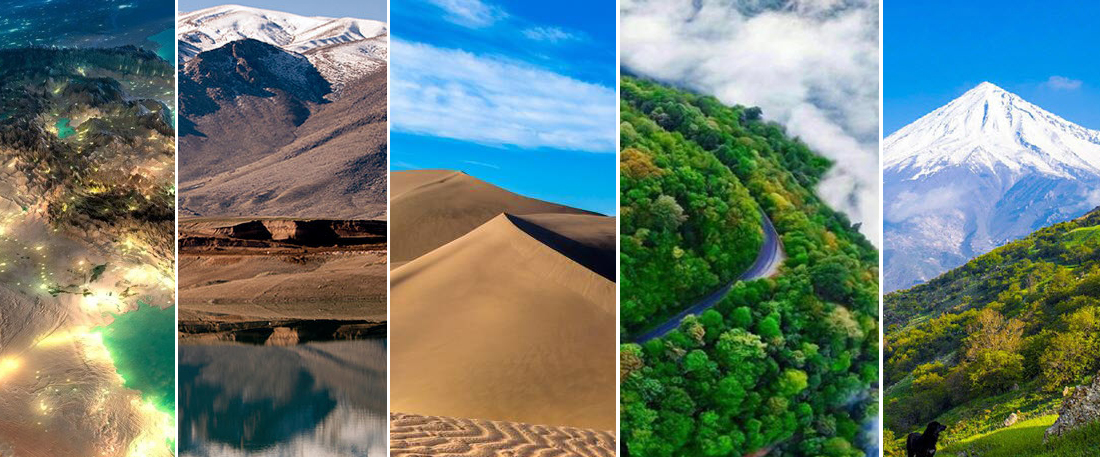

IRAN Located in southwestern Asia, shares its entire northern border with the Republics of Armenia, Azerbaijan, Turkmenistan (all parts of the former Soviet Union). Of all the 2,670 kilometer northern borders, 650 kilometers is coastline border with the Caspian Sea. Iran’s western borders are shared with Turkey in the north and Iraq in the south. Afghanistan and Pakistan are Iran’s neighbors from the East. To the south, Iran’s border is the long coastline of the Persian Gulf and Oman Sea.
Persian Gulf is the shallow marginal part of the Indian Ocean. The sea area of 240,000 square kilometers start from the Arvand Rud delta to the Strait of Hormoz, which links it with the Sea of Oman. It is bordered on the north, northeast and east by Iran, on the northwest by Iraq and Kuwait, on the west and southwest by Saudi Arabia and Qatar, and on the south and the southeast by the UAE and partly by Oman.
Temperature fluctuates widely in different parts of the country all year long. Being located in northern hemisphere makes summer time hot and winter cold.
Up in the north and down in the south, close to the bodies of water (Caspian Sea in the north and Persian Gulf in south) the summer months can be hot and humid. In other parts though, it will be more moderate and you can always take refuge to shades. If you are planning to go to the west of the country and also the mountainous area, make sure you have a cardigan or a light jacket with you. If you are going to higher elevations, make sure you are prepared for a very cold temperature. It can get chilly even in the middle of August!
But don’t get intimidated by the weather. You will not regret trying Iranian organic fruit and sightseeing the forest green of mountainous forests and tea plantations are worth to tolerate the heath. Mind you, energy is affordable in Iran and indoors are always kept in moderate temperature.
Winter weather also varies from mild to cold, with heavy snow in the higher elevation of the mountains. The temperature may go below zero. If you are a fan of skiing, make sure you visit Abali, Dizin and other ski resort in Iran. You can always rent skis, boards, pole and anything else you need at the resorts.
Spring and fall are relatively mild. If you travel to Iran in spring time, make sure you visit the Garden of Flowers in Isfahan. As tourists describe it, it is a piece of heaven on Earth. The scent of blooming flowers in Shiraz, Sary and Rasht, as Iranians say, will captivate you.It can become rainy during fall and spring. The yearly rainfall averages in Iran is about 25 centimeters or less. It goes up to 50 centimeters in mountainous valleys of the Zagros and the Caspian coastal plain, and up to 100 centimeters in the northwestern part of the country.
Iran is famous for its four season weather. It is considered as one of few countries in the world where visitors may experience all four seasons in a part of the country all year long.